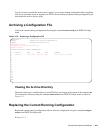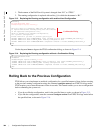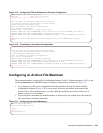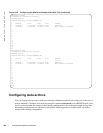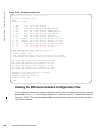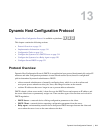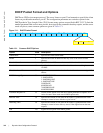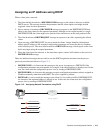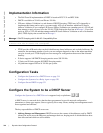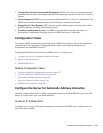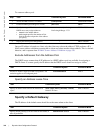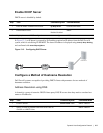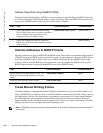Dynamic Host Configuration Protocol | 311
13
Dynamic Host Configuration Protocol
Dynamic Host Configuration Protocol is available on platforms: c e s
This chapter contains the following sections:
• Protocol Overview on page 311
• Implementation Information on page 314
• Configuration Tasks on page 314
• Configure the System to be a DHCP Server on page 314
• Configure the System to be a Relay Agent on page 320
• Configure Secure DHCP on page 321
Protocol Overview
Dynamic Host Configuration Protocol (DHCP) is an application layer protocol that dynamically assigns IP
addresses and other configuration parameters to network end-stations (hosts) based on configuration
policies determined by network administrators. DHCP:
• relieves network administrators of manually configuring hosts, which is a can be a tedious and
error-prone process when hosts often join, leave, and change locations on the network.
• reclaims IP addresses that are no longer in use to prevent address exhaustion.
DHCP is based a client-server model. A host discovers the DHCP server and requests an IP address, and
the server either leases or permanently assigns one. There are three types of devices that are involved in
DHCP negotiation:
• DHCP Server—a network device offering configuration parameters to the client.
• DHCP Client—a network device requesting configuration parameters from the server.
• Relay agent—an intermediary network device that passes DHCP messages between the client and
server when the server is not on the same subnet as the host.



